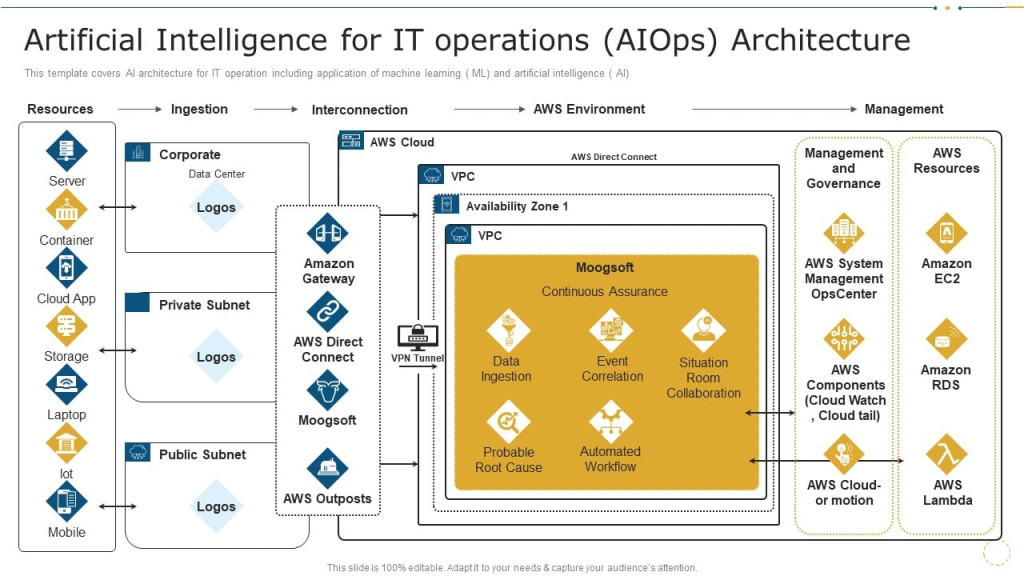
Are you tired of sifting through endless amounts of data and trying to make sense of it all? Do you wish there was a way to streamline your IT operations and make them more efficient? If so, then AIOps might be the solution you’re looking for.
What is AIOps?
AIOps stands for Artificial Intelligence for IT Operations. It’s a term that refers to the integration of artificial intelligence and machine learning technologies into IT operations to improve the efficiency and effectiveness of those operations.
AIOps is a rapidly growing field, and its adoption is increasing across various industries. It is being used to automate tasks, reduce response times, and improve the overall performance of IT operations. It’s no wonder that many businesses are now looking for ways to incorporate AIOps into their operations.
The AIOps architecture
The AIOps architecture is the framework that enables the integration of artificial intelligence and machine learning technologies into IT operations. It’s a complex system that involves various components working together to achieve the desired outcomes.
At its core, the AIOps architecture consists of three primary components: data ingestion, data analysis, and data output.
Data ingestion
Data ingestion involves collecting data from various sources, including logs, metrics, and events. This data is then stored in a centralized location, where it can be accessed and analyzed.
Data analysis
Data analysis involves using artificial intelligence and machine learning technologies to analyze the collected data. This analysis can identify patterns and anomalies, predict future events, and provide insights that can be used to optimize operations.
Data output
Data output involves presenting the analyzed data in a meaningful way. This can include visualizations, reports, and alerts that can be used to inform decision-making and improve operations.
Benefits of the AIOps architecture
The AIOps architecture offers several benefits to businesses that adopt it. Some of these benefits include:

Increased efficiency
By automating tasks and providing insights that can be used to optimize operations, the AIOps architecture can help businesses become more efficient. This can lead to cost savings, increased productivity, and improved customer satisfaction.
Improved reliability
By identifying potential issues before they occur, the AIOps architecture can help improve the reliability of IT operations. This can lead to reduced downtime, improved system availability, and increased customer satisfaction.
Better decision-making
By providing insights that can be used to inform decision-making, the AIOps architecture can help businesses make better decisions. This can lead to improved outcomes and increased competitiveness.
Challenges of the AIOps architecture
While the AIOps architecture offers several benefits, it also presents some challenges. Some of these challenges include:

Data privacy and security
Collecting and storing large amounts of data can present data privacy and security challenges. It’s important to ensure that data is collected and stored securely, and that proper access controls are in place.
Skills gap
Implementing and managing the AIOps architecture requires specialized skills that may not be readily available. Businesses may need to invest in training or hire new staff to manage the system effectively.
Integration challenges
Integrating the AIOps architecture with existing IT systems can be challenging. It’s important to ensure that the system is compatible with existing systems and that data flows smoothly between them.
Conclusion
The AIOps architecture is a powerful tool that can help businesses streamline their IT operations and improve their overall performance. By integrating artificial intelligence and machine learning technologies, businesses can automate tasks, reduce response times, and improve decision-making. While the system presents some challenges, the benefits it offers make it a worthwhile investment for businesses looking to stay competitive in today’s fast-paced environment.
